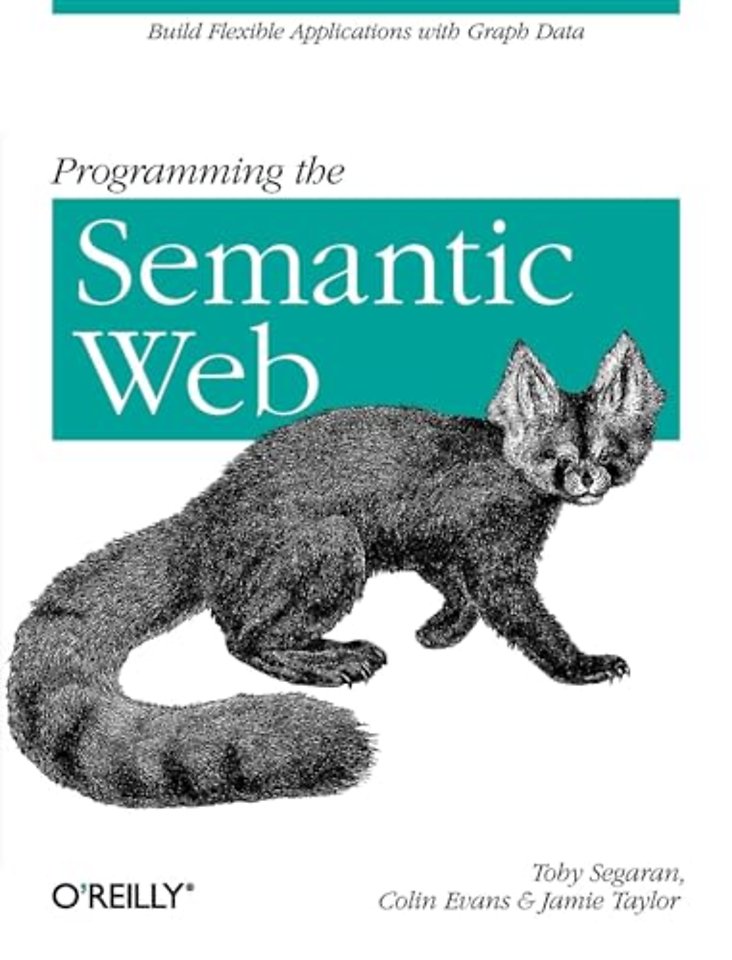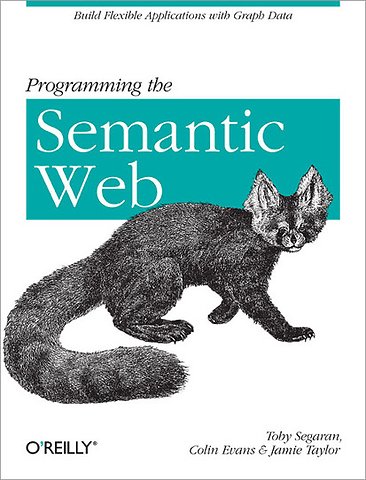


Toby Segaran is the author of Programming Collective Intelligence, a very popular O'Reilly title.
Meer over de auteursProgramming the Semantic Web
Build flexible applications with Graph Data
Samenvatting
With this book, the promise of the Semantic Web - in which machines can find, share, and combine data on the Web - is not just a technical possibility, but a practical reality 'Programming the Semantic Web' demonstrates several ways to implement semantic web applications, using current and emerging standards and technologies. You'll learn how to incorporate existing data sources into semantically aware applications and publish rich semantic data.
Each chapter walks you through a single piece of semantic technology and explains how you can use it to solve real problems. Whether you're writing a simple mashup or maintaining a high-performance enterprise solution,Programming the Semantic Web provides a standard, flexible approach for integrating and future-proofing systems and data.
This book will help you:
- Learn how the Semantic Web allows new and unexpected uses of data to emerge
- Understand how semantic technologies promote data portability with a simple, abstract model for knowledge representation
- Become familiar with semantic standards, such as the Resource Description Framework (RDF) and the Web Ontology Language (OWL)
- Make use of semantic programming techniques to both enrich and simplify current web applications
Specificaties
Over Colin Evans
Over Jamie Taylor
Inhoudsopgave
Preface
Part 1: Semantic Data
1. Why Semantics?
-Data Integration Across the Web
-Traditional Data-Modeling Methods
-Semantic Relationships
-Metadata Is Data
-Building for the Unexpected
-"Perpetual Beta"
2. Expressing Meaning
-An Example: Movie Data
-Building a Simple Triplestore
-Merging Graphs
-Adding and Querying Movie Data
-Other Examples
3. Using Semantic Data
-A Simple Query Language
-Feed-Forward Inference
-Searching for Connections
-Shared Keys and Overlapping Graphs
-Basic Graph Visualization
-Semantic Data Is Flexible
Part 2: Standards and Sources
4. Just Enough RDF
-What Is RDF?
-The RDF Data Model
-RDF Serialization Formats
-Introducing RDFLib
-SPARQL
5. Sources of Semantic Data
-Friend of a Friend (FOAF)
-Linked Data
-Freebase
6. What Do You Mean, “Ontology”?
-What Is It Good For?
-An Introduction to Data Modeling
-Just Enough OWL
-Using Protégé
-Just a Bit More OWL
-Some Other Ontologies
-This Is Not My Beautiful Relational Schema!
7. Publishing Semantic Data
-Embedding Semantics
-Dealing with Legacy Data
-RDFLib to Linked Data
Part 3: Putting It into Practice
8. Overview of Toolkits
-Sesame
-Other RDF Stores
-SIMILE/Exhibit
9. Introspecting Objects from Data
-RDFObject Examples
-RDFObject Framework
-How RDFObject Works
10. Tying It All Together
-A Job Listing Application
-Job Listing Data
-Serving the Website
-A Generic Viewer
-Getting Company Data
-Specialized Views
-Publishing for Others
-Expanding the Data
-Sophisticated Queries
-Visualizing the Job Data
-Further Expansion
Part 4: Epilogue
11. The Giant Global Graph
-Vision, Hype, and Reality
-Participating in the Global Graph Community
-Bracing for Continuous Change
Index
Anderen die dit boek kochten, kochten ook
Rubrieken
- cadeauboeken
- computer en informatica
- economie
- filosofie
- flora en fauna
- geneeskunde
- geschiedenis
- gezondheid
- jeugd
- juridisch
- koken en eten
- kunst en cultuur
- literatuur en romans
- mens en maatschappij
- naslagwerken
- non-fictie informatief/professioneel
- paramedisch
- psychologie
- reizen
- religie
- schoolboeken
- spiritualiteit
- sport, hobby, lifestyle
- thrillers en spanning
- wetenschap en techniek
- woordenboeken en taal





